Natrolite – Mineral Properties, Photos and Occurrence
Natrolite is a common sodium zeolite, forming highly aesthetic and fragile crystals. It has also important industrial use in mineral filters and absorbers.
Natrolite is a sodium-dominant zeolite, one of a class of abundant minerals that often develop as a result of low-temperature alteration of volcanic rocks and volcanic ash in contact with water.
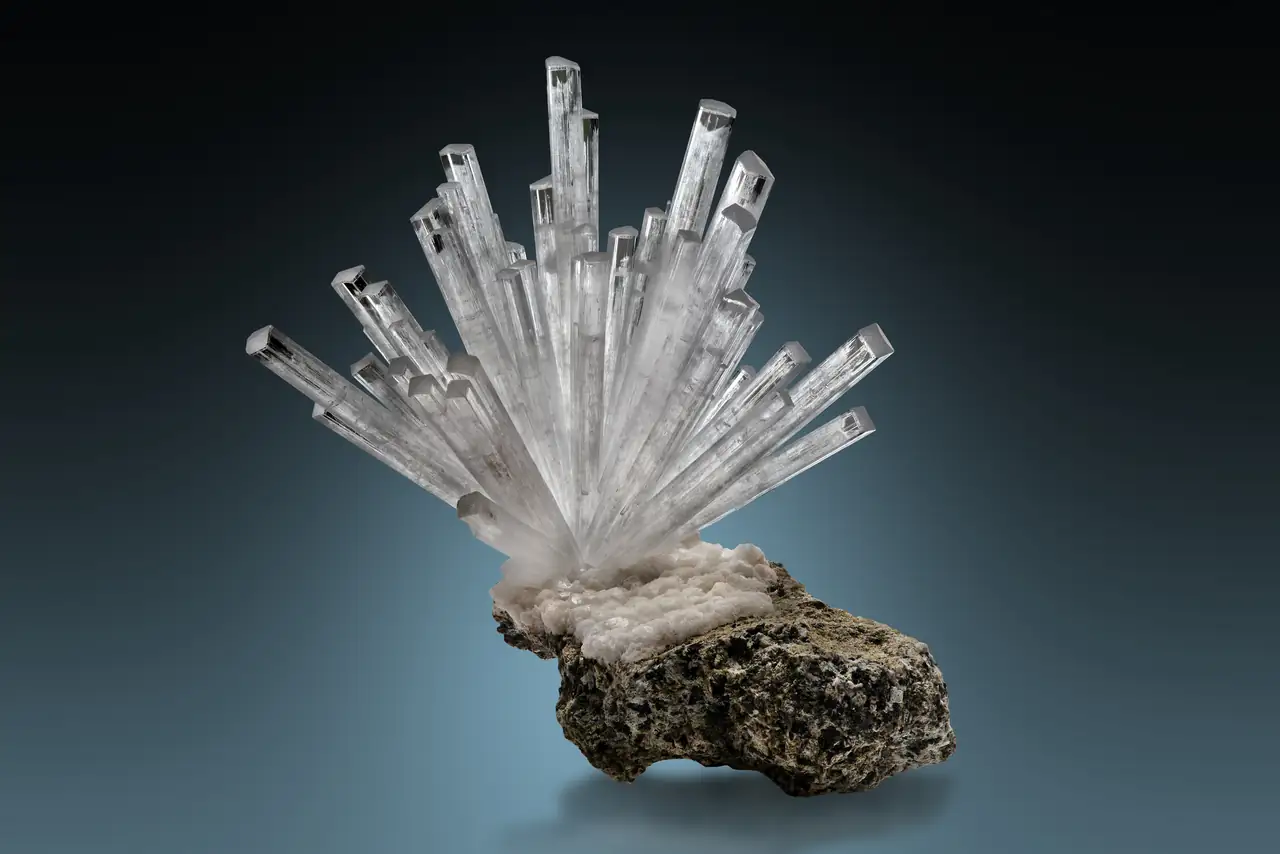
Structurally, zeolites contain a framework of channels that selectively allow different cations to pass through the structure, offering the end-user an easily recovered, low-cost, bulk resource useful for a variety of industrial processes requiring absorption, filtration and catalysis.
Crystal Structure of Natrolite
Natrolite is a sodium tectosilicate from zeolite group, which crystallizes in the orthorhombic system. Natrolite chemical formula is Na2Al2Si3O10.2H2O, where part of Na might be replaced by Ca, Ba, Sr, K and Mg. Cation charge is balanced by the Al-Si ratio.
Typically, it forms acicular or fibrous crystals, but it can also occur as square prisms terminated by a low pyramid. Twinning is observed on {110}, {011} and {0311}. Rarely, natrolite can form fine grained massive specimens.
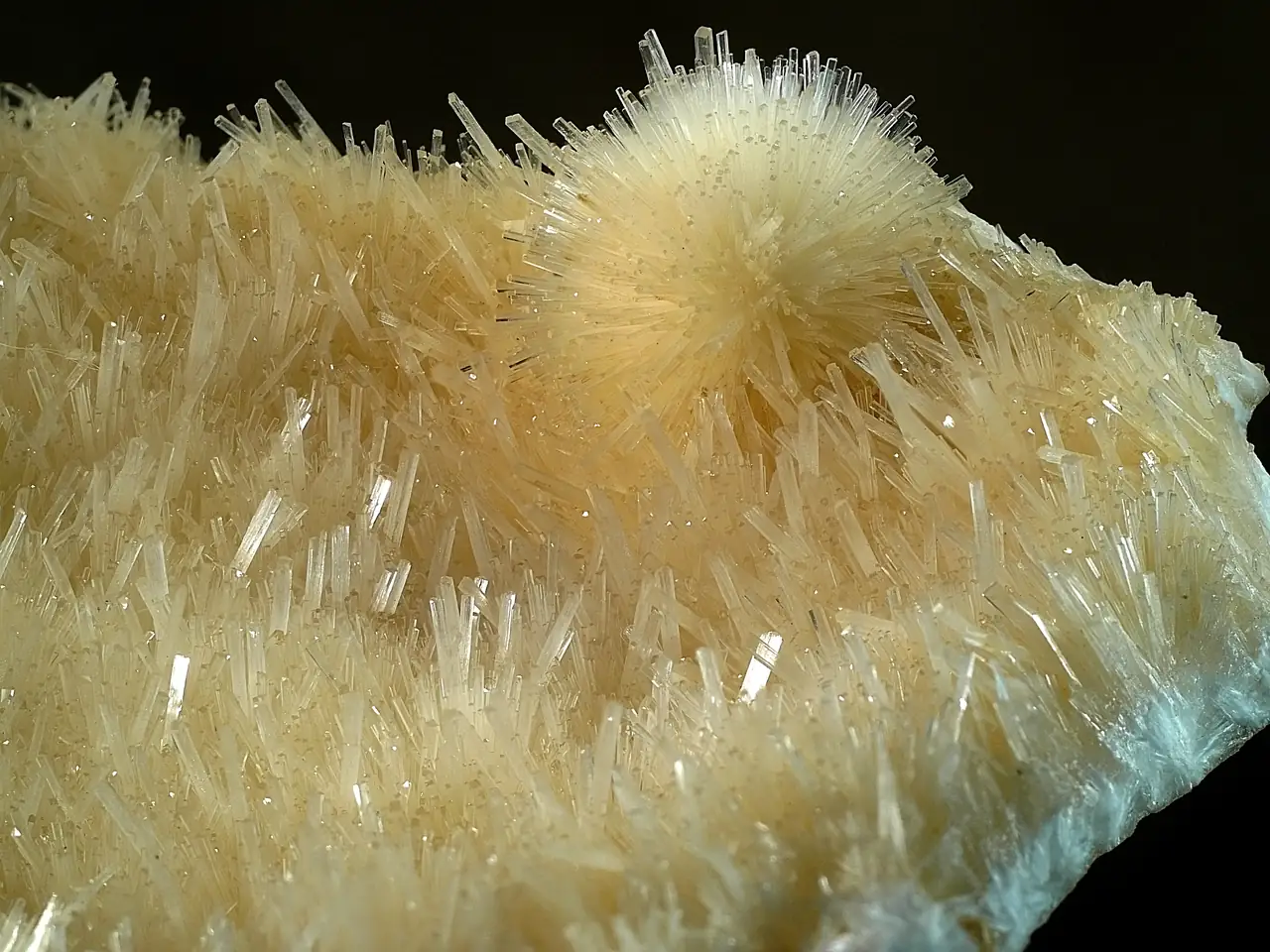
Natrolite can form epitaxial (oriented) growths with mesolite and scolecite.
Natrolite is isostructural with other members of natrolite sub-group (mesolite, scolecite, gonnardite and paranatrolite). Natrolite is a dimorph of gonnardite.
| Mineral | Formula | Crystal system |
|---|---|---|
| Natrolite | Na2Al2Si3O10.2H2O | Orthorhombic |
| Gonnardite | (Na,Ca)2(Si,Al) 5O10.3H2O | Orthorhombic |
| Mesolite | Na2Ca2Si9Al6O30.8H2O | Orthorhombic |
| Scolecite | CaAl2Si3O100.3H2O | Monoclinic |
| Paranatrolite | Na2Al2Si3O10.3H2O | Monoclinic |
Physical Properties of Natrolite
Natrolite is ordinarily colorless, white, off-white or light gray and occasionally pink, reddish, yellowish or light brown. It is transparent to translucent, streak is white.
It's luster ranges from vitreous to silky or pearly; its hardness is 5-6; and its density is 2.25 g/cm3.
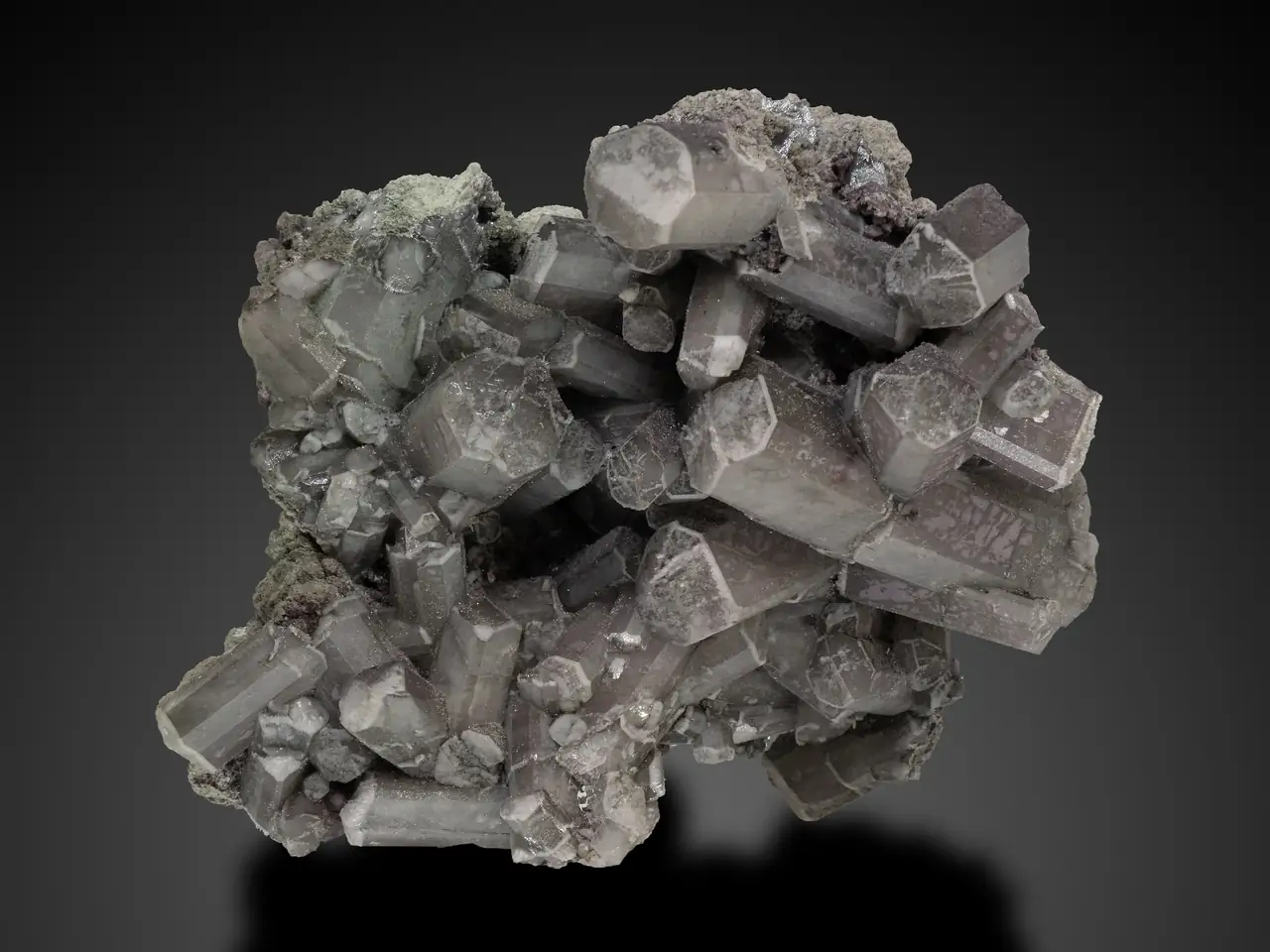
Natrolite has a perfect cleavage on {110} and it is brittle to the point of being fragile, with an irregular or uneven fracture.
Natrolite will melt in a flame, generating a yellowish color created by the presence of sodium. Hydrochloric acid will decompose the mineral with a companion release of gelatinous silica.
Natrolite commonly displays yellow to orange fluorescence in UV light.
Naming and Discovery
Martin Heinrich Klaproth (1743-1817), a German chemist credited with discovering uranium, zirconium and cerium, and naming titanium and tellurium, named natrolite in 1803. The name is derived from νατρών (natron, the Greek word for soda), in reference to the sodium content and λίθος (lithos, meaning stone).
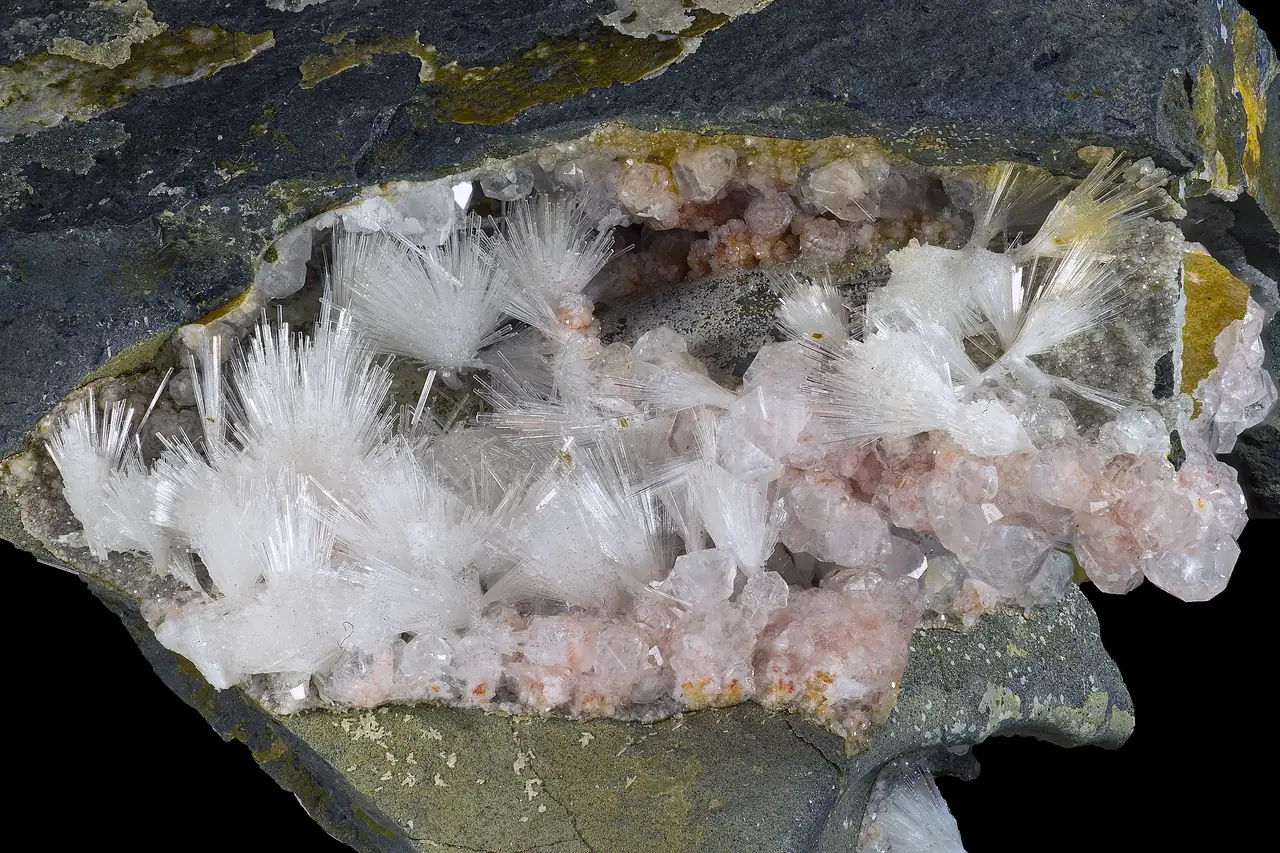
Natrolite Varieties
- Bergmannite or Spreustein, is an impure natrolite variety attributed to the alteration of sodalite in high-temperature augite syenites in southern Norway.
- Hydronephelite is not directly referenced as a natrolite variety. However, it is a mixture of natrolite (~ 80%), diaspore and gibbsite, which is a result of sodalite alteration. It was first described from Dennis Hill, Litchfield, Maine, USA. Its composition may overlap with Spreustein.
- Fargite is a red calcian natrolite from Glenfarg in Perthshire, central Scotland.
- Galactite is a calcian natrolite from Glenfarg in Perthshire, central Scotland. Some of these were later identified as ferrierite.
- Mooraboolite is a potassium rich natrolite, originally reported from Moorabool River, Maude, Victoria, Australia.
- Kondrikovite is an alteration product of lovchorrite, originally described from Kola Peninsula, Murmanskaja Oblast', Russia.
Origin
The most prevailing occurrence of natrolite is in the undersaturated (silica- deficient) volcanic rocks. It is often present in both matrix and in the crystalline form inside amygdules (volcanic bubbles). It usually forms sprays of acicular white crystals.
Natrolite is a known accessory in nepheline syenites and other (utra)alkaline magmatic rocks.
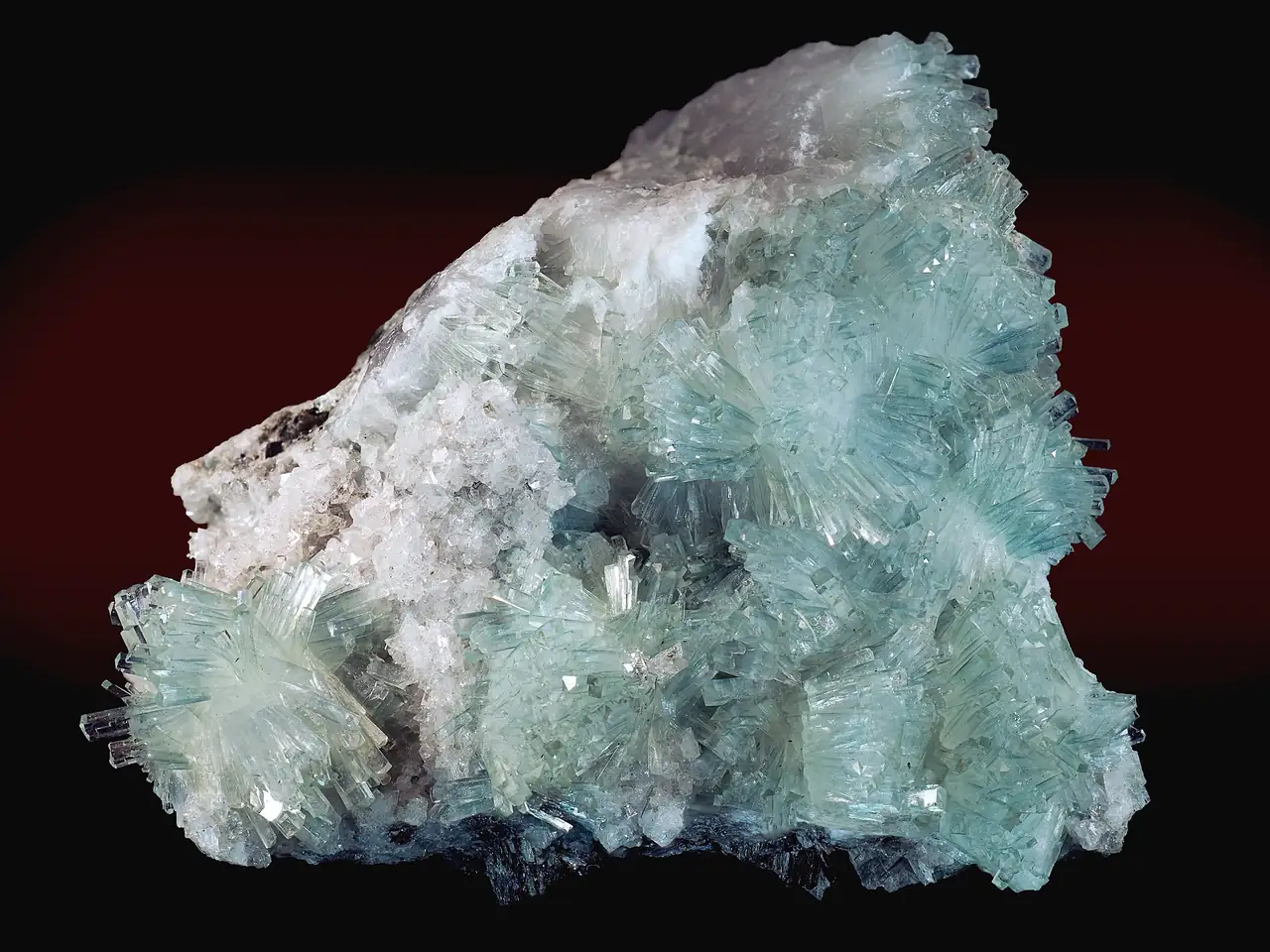
It forms in both alkaline and normal pegmatites as a late hydrothermal phase. It often forms nice crystals inside pegmatite pockets.
Certain types of Alpine type veins (clefts) contain natrolite, typically in amphibolites. Natrolite forms long prismatic or acicular crystals, often producing highly aesthetic specimens.
Hydrothermal alteration of the ultrabasic rocks can result in formation of natrolite within hydrothermal veins.
Exotic occurrence is in the form of natrolite veins in altered serpentinites in San Benito, California. These veins host the precious benitoite and neptunite crystals, which are exposed by etching off the natrolite.
Associated Minerals
Natrolite in volcanic rocks is very often associated with other zeolites like analcime, thomsonite, stilbite, and sometimes its isostructural relatives – mesolite and scolecite. Other common associated minerals include calcite or apophyllite.

Altered metamorphic rocks or Alpine fissures with natrolite often contain prehnite, datolite, laumontite, sometimes also apophyllite, titanite, clinozoisite and axinite-(Fe).
Uses of Natrolite
Natrolite is rarely used as a gemstone, owing to the rarity of large crystals and the brittle character of the mineral.
Zeolites, of which natrolite is a member, lend themselves as a class to filtration because the internal framework mineral structure is characterized by hollow channels that allow the free passage of certain elements and preclude others.
These channels are highly selective in their affinity for elements, allowing tailoring the application of specific zeolites to specific problems. In filtration applications, end-users have to contend with low purity and variable crystal size.
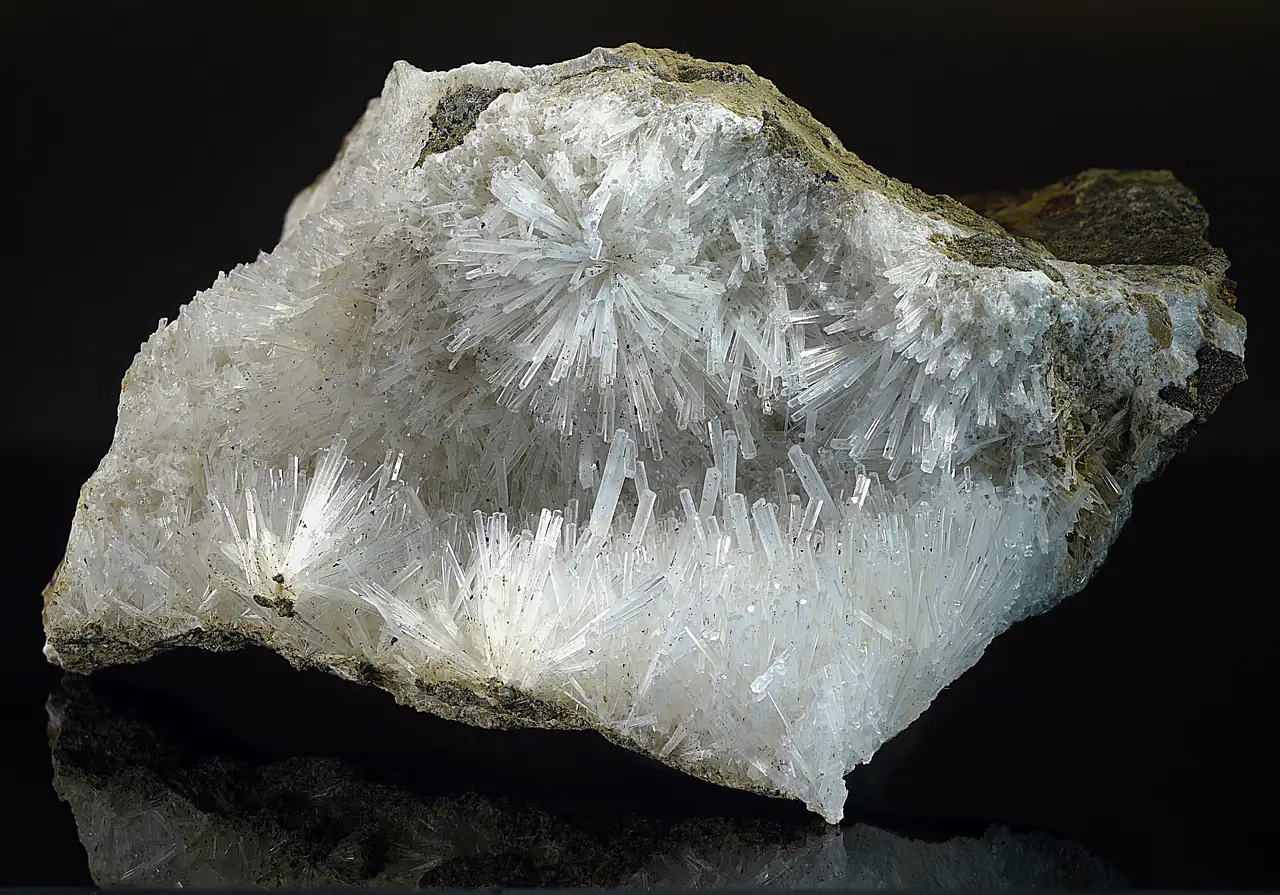
The worldwide market for zeolites is on the order of $30 billion dollars, for all uses, including catalysts, adsorbents, detergents and ‘other,’ in a variety of industries including paper production, chemical processing, petroleum refining, electronics, fabrication and ceramics.
Industrially, natrolite can be put to use as a water purifier and chemical filter. It is exceptionally difficult to identify the specific end-uses or volume of natrolite actually employed, as this information is not generally broken out in published reports.
Occurrence
As natrolite is quite common in volcanic rocks, there are countless productive sites worldwide.
The natrolite type locality is Howenegg Quarry, Hegau, Baden-Würtenberg, Germany.
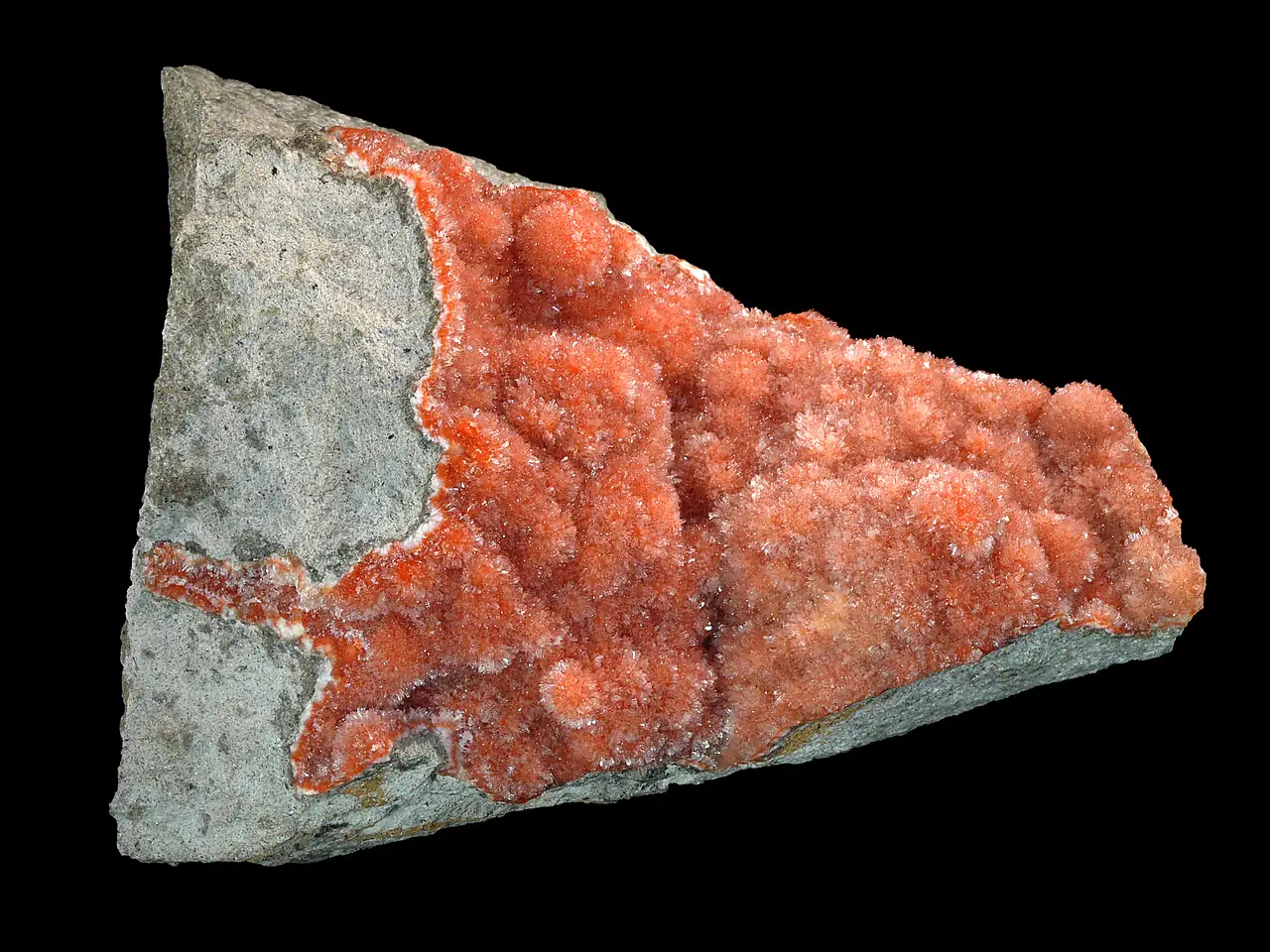
Famous European localities produced white prismatic crystals from Puy-de-Marman, Puy-de-Dôme, France and light pink needle sprays from Piz Sella, Bolzano Province, Italy. Thick white crystals come from Lugar da Nave quarry, Nave, Monchique, Monchique, Faro, Portugal.
More specimens come from Dean Quarry, St. Keverne, Lizard Peninsula, Cornwall and Giant’s Causeway basalts, County Antrim, Northern Ireland, both in UK.
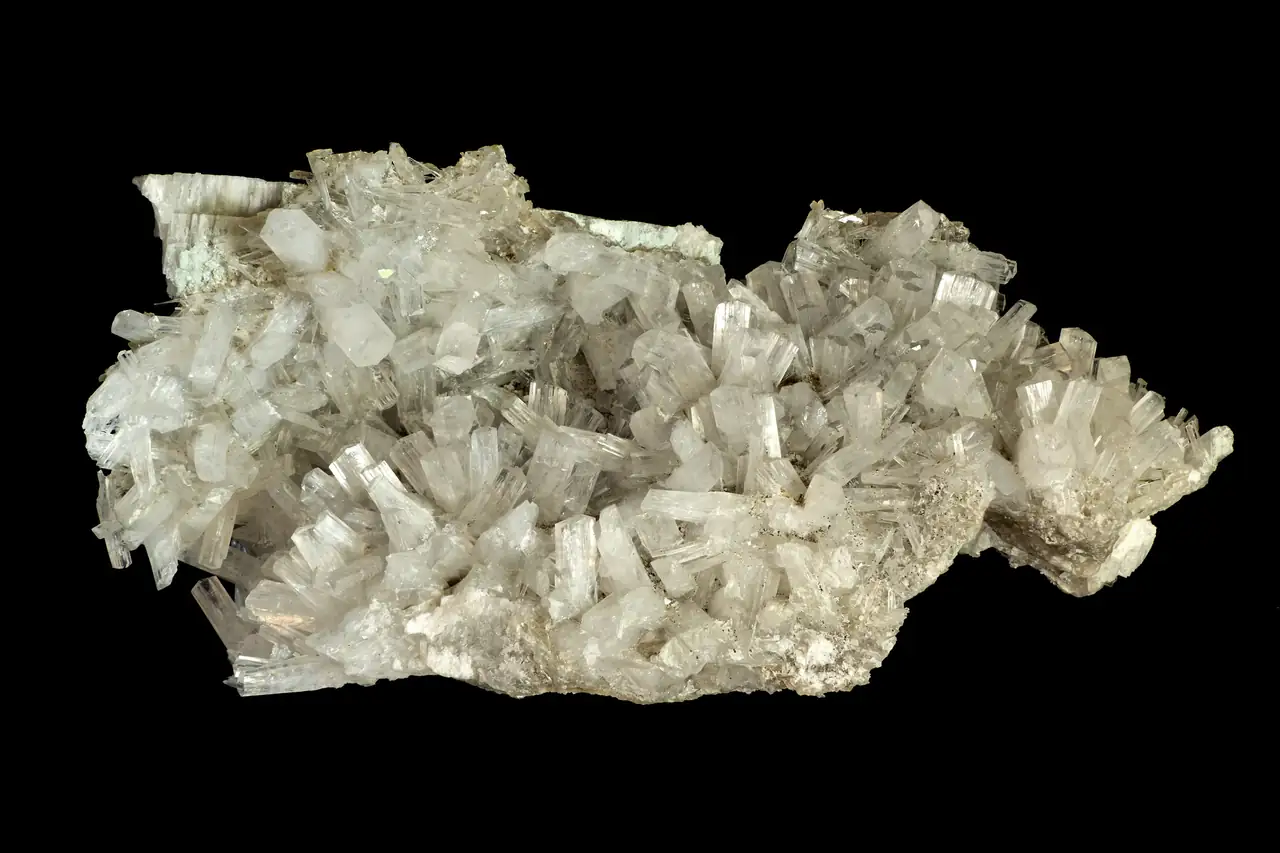
Czech Republic hosts numerous natrolite localities. Mariánská skála quarry in Ústí and Labem produced interesting red and pink natrolites, Soutěsky quarry and Dobranka produced amygdules filled with acicular white natrolite, and Těchlovice produced thick and large crystals.
Exceptionally large crystals were recovered from the Khibiny and Lovozero Massifs, Kola Peninsula, Russia.
Typical white and pink acicular crystal sprays were found at Little Plains Quarry, Blue Tier District, Tasmania, Australia.
The Indian trap basalts, famous for its excellent zeolites, are surprisingly not producing much natrolite. Some specimens come from Pune, Nasik and Mumbai, however, scolecite is way more common and available in world class quality.
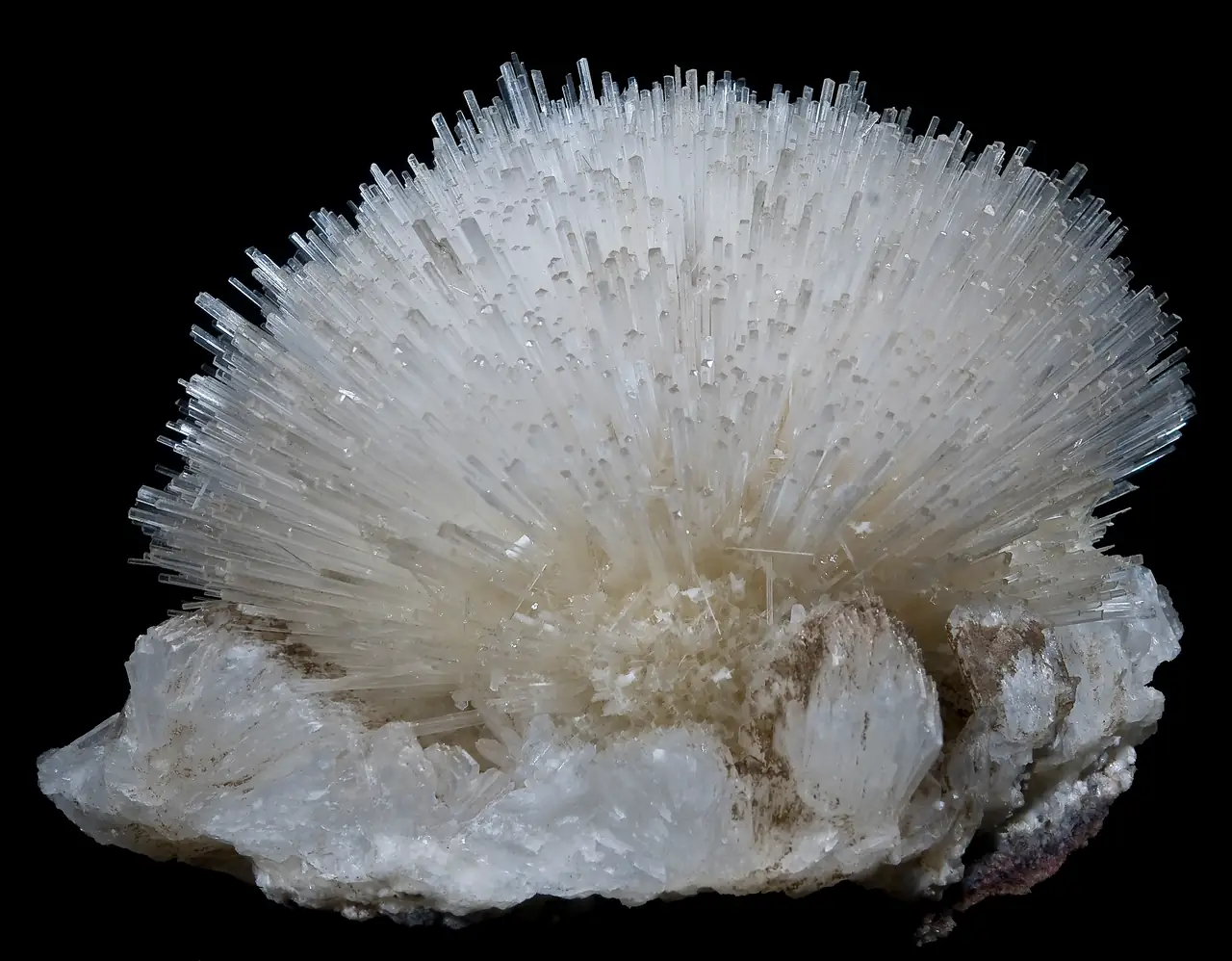
Canadian localities include Ice River district in British Columbia; Poudrette Quarry, Mont Saint-Hilaire in Quebec; and Five Islands area and Wasson’s Bluff near Parrsboro, Nova Scotia.
Excellent natrolites come from New Jersey in US. Most famous are Millington Quarry and Chimney Rock Quarry in Somerset Co., and Upper New Street Quarry and Prospect Park in Passaic Co.
Other US localities include Livingstone, Park County in Montana; Springfield, Lane County in Oregon; and Horseshoe Dam, Maricopa County in Arizona.
Special are natrolite veins with rare benitoite and neptunite at the Gem and Dallas Mines, San Benito County, California.





Comments